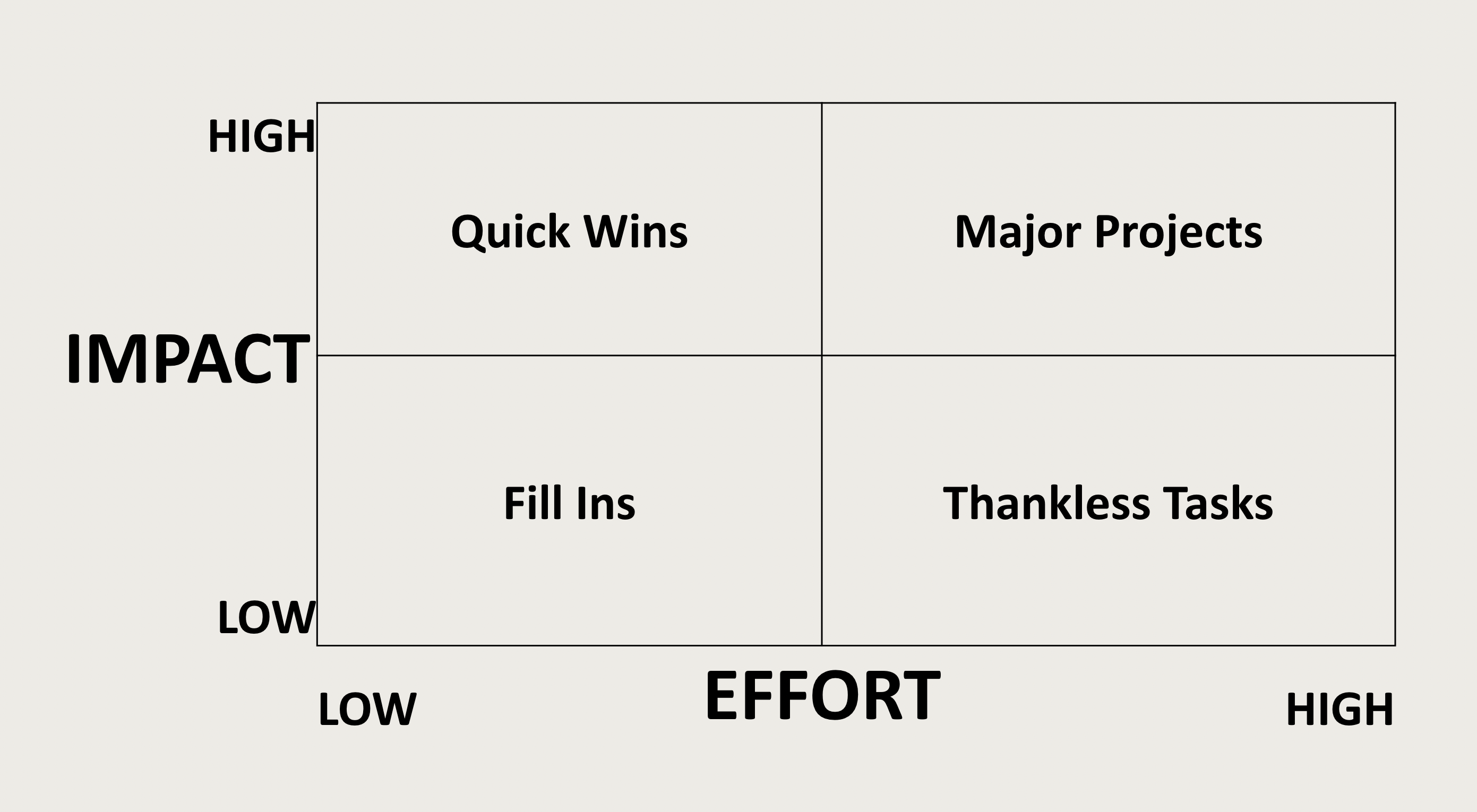Strategic thinking rarely occurs spontaneously.
—Michael Porter
The ability to be a strategic thinker is a key characteristic of an effective leader. But one common mistake people make is to assume that strategic thinking is the exclusive domain of C-suiters or other positions with a senior title.
That isn’t true at all!
Anyone can be a strategic thinker!
In fact, everyone should be a thinking strategically from whatever chair they currently occupy. Even if you’re the receptionist, it’s worthwhile to constantly be evaluating how you can do your job better. After all, you’re the company’s brand ambassador to both existing and potential clients as well as possible new hires. Even how you greet existing employees can help them start the day on a more positive note (and thus potentially contribute more to the company). That’s the power of thinking strategically from every seat – by developing your skills, you elevate your game and improve your own leadership potential.
Short Term and Long Term Thinking
As a leader, you need to remember at all times that you are judged according to how your staff performs. Therefore, in all of your planning, set your personal bar high and take steps to ensure that your staff reflects the high standards you have set for yourself.
In the short term, this means your planning should involve:
 Hiring the best people you can find (and not holding on to poor performers)
Hiring the best people you can find (and not holding on to poor performers)- Providing top-notch onboarding
- Making sure your staff have the training they need to perform at their best
- Focusing your team’s efforts on one or two metrics that truly help the business
In the long term, this means your planning should involve:
- Building a team that can react quickly to challenges and changes
- Identifying—and addressing—the obstacles to productivity
- Identifying—and seizing!—growth opportunities for your team
- Creating succession plans for critical positions
- Cataloguing employee skills (having this information at your fingertips when future opportunities or challenges arise will enable you to tap the right people for them)
Take Action!
Whether you’re looking at the short term or the long term, though, no goal is fully attainable without strategic thinking. Revisiting the elements of strategic thinking that I introduced in my previous post Strategic Thinking: What It Is and Why You Need It, let’s examine ways to improve your skill in each of those areas.
Forward Thinking
Whether you’re examining your organization’s goals or your own goals, consider using these three methodologies to help you fine tune your targets and how to reach them.
Gap analysis
Use introspection to figure out your current state, including which areas need improvement and which issues are the highest priority to address.
Next, determine what the ideal future state is. This can be defined specifically (such as “increase social engagement by a factor of X” or “decrease absenteeism by 25 percent”) or broadly (such as “create a more inclusive work culture”).
Then identify ways to bridge the gap between the current state and the future state. It doesn’t matter if your solutions are qualitative or quantitative (or both), but they must be specific and trackable.
SWOT analysis
Identify the strengths, weaknesses, opportunities, and threats that are most relevant to your organization (or to your career). As anyone who grew up in the ‘80s watching the G.I. Joe cartoon show is well aware, “knowing is half the battle,” and once you have filled these categories and have specific points to address, it’s much easier to map a path forward.
Fishbone diagram
Also called an Ishikawa diagram (after Kaoru Ishikawa, the Japanese organizational management theorist who developed it), this tool links a problem to its possible causes. It’s graphics-based depiction of the data makes it easier to see the connections between causes and effects and therefore easier to address problematic areas. (For an example of a fishbone diagram, see the accompanying illustration.)
Eager for input
The best leaders know that they don’t know everything, so they surround themselves with smart people and listen to them. When you understand that it’s more important to get things right than to be right—and that it’s okay to admit your own shortcomings—you gain access to information and tools that can improve the success of your projects. Ask questions and take the time to listen to what others say. You don’t necessarily have to agree with them, but you do need to be genuinely open to their ideas.
Focused on the long term
Achieving big goals takes both time and effort. (Rome wasn’t built in a day, you know!) So always keep the big picture in mind. For example, do your research on upcoming trends (such as technology developments, hiring practices, and skills gaps) so you can be prepared to meet them. At the same time, though, be sure to keep both feet on the ground: rather than plan for every possible paradigm shift, conserve your mental energy for the future scenarios that might actually come to pass.
Willing to take risks
The moment you say “that’s not how we do things around here,” it’s time to rethink how you approach strategy. If you don’t want your company (and your career) to get stuck in a rut, sometimes you need to push yourself beyond your comfort zone and embrace uncertainty. As a leader, you also need to encourage your people to take risks (and make mistakes!), and you need to recognize and reward informed (but not reckless) risk taking. Most importantly, give your people some autonomy to make these decisions. In other words: trust your employees.
Adept at prioritizing time
 Start by drawing an action priority matrix to measure the impact of each item on your plate and the effort needed to complete it. (Though often credited to David Allen’s Getting Things Done, this simple technique actually has its origins in a method favored by Dwight D. Eisenhower, which he described, borrowing the words of an unnamed college president, in a speech in 1954:
Start by drawing an action priority matrix to measure the impact of each item on your plate and the effort needed to complete it. (Though often credited to David Allen’s Getting Things Done, this simple technique actually has its origins in a method favored by Dwight D. Eisenhower, which he described, borrowing the words of an unnamed college president, in a speech in 1954:
I have two kinds of problems, the urgent and the important. The urgent are not important, and the important are never urgent.
This approach is clear, concise, and effective.
As you think about how to prioritize, ask yourself the following two questions and be honest with yourself in your replies:
- Am I focusing on easy tasks (e.g., quick wins, fillers) and actively avoiding the challenging chores on my plate?
- Am I being truly productive—or am I just being busy?
Once you’ve figured out your priorities, don’t let yourself get derailed. Focus on your most challenging projects when you’re at your peak mental state. If you’re a “morning person,” then tackle that stuff first thing in the day (perhaps even before your daily inbox cleanout).
(For even more ideas for how to determine your priorities and stick to them, check out my earlier post “Top 10 Tips for Defeating the Time Thief.”)
Nimble
Even when you’ve done your best to anticipate, occasionally you look up to see something totally unexpected barreling toward your face, and at that moment all you can do is figure out how to respond to it so you don’t lose your momentum. Do you try to duck around it and avoid it completely? Do you try to take hold of it and see what happens? The specific response will vary according to the situation, but the best way to be generally prepared for the unexpected is not to fear change.
Fear of change can divide workplaces, increase employee disengagement and turnover, lead to missed deadlines and drops in productivity, cause clients to take their business elsewhere, stunt innovation, and results in tons of other problem. In short, fear of change is bad. But change itself can often be very good, and if you and your staff are nimble—able to respond quickly and effectively—you can handle anything that comes your way. In addition to being prepared, work to cultivate among your employees a mindset that values flexibility and creativity, and encourages colleagues and departments to help each other navigate challenging situations.
 Committed to lifelong learning
Committed to lifelong learning
When you become aware of something new that could have a big impact on your organization or industry (e.g., technology developments, new data analysis methods), learn what you can about it, including how it can be helpful for your company and your career. When you see opportunities to learn from past experiences (for example, by reflecting on what worked in a previous project—and what didn’t), seize them. “Knowledge is power,” as the saying goes, and in the corporate world that type of power can help you lead a capable and engaged team, spur your career to new heights, or contribute to your organization’s success (or all three!).
Creative
First and foremost, make a conscious effort to change your style of thinking. If you don’t actively search for new paths, you and your team (and your company) will be stuck on the same road indefinitely—which means you won’t innovate. Among the many great techniques for fostering creativity, here are a few of my favorites:
- Step away from work entirely, especially when you find yourself stuck. Taking a break from a work-related task and spending time on something completely different (such as going for a walk, drawing a picture, baking a pie, building an Adirondack chair—whatever!) can give your mind time to refresh itself and make space for new ideas to “sneak” in.
- Lay down. I know, sounds crazy right? But I frequently lay down in the afternoon when I feel my energy starting to wane. I don’t lay there for long – perhaps 10 minutes – but the simple act of relaxing my mind allows me to resume projects or tasks with a renewed vigor.
- Conduct fun, innovative exercises for your team on a regular basis (even via zoom). When I was at Oxygen Media, I had my team do an exercise called “a million dollars.” What would you do at Oxygen if you had an extra million dollars in your budget? After brainstorming on all the ways they would spend the windfall, I would then change it up and ask “what would you do if you only had $100,000 in your budget.” After 10 minutes or so, I would then pass along that they really only had $10,000. What would they do now? It was amazing at how the teams were able to implement many of the million-dollar ideas, just on a smaller scale. Once their creativity was unleashed, it resulted in big, bold thinking that sometimes is lost when tackling the day-to-day. Helping your employees step out of the tactical and into creative problem-solving mode yields dividends on future creativity.
Final Thoughts
This strategy represents our policy for all time. Until it’s changed.
—Marlin Fitzwater
As you strive to improve your skill as a strategic thinker, remember that this is a process, not a one-and-done event. It takes constant work, and it’s easy to lose your momentum. So block out time every day to work on your strategic thinking—in ways that benefit your company and in ways that benefit you. If you apply enthusiasm, effort, and energy to this task, you’ll be astonished by how much your strategic thinking skills can grow.
P.S. If you have had success with any of these (or other) techniques for become a better strategic thinker, please share them in the comments!

